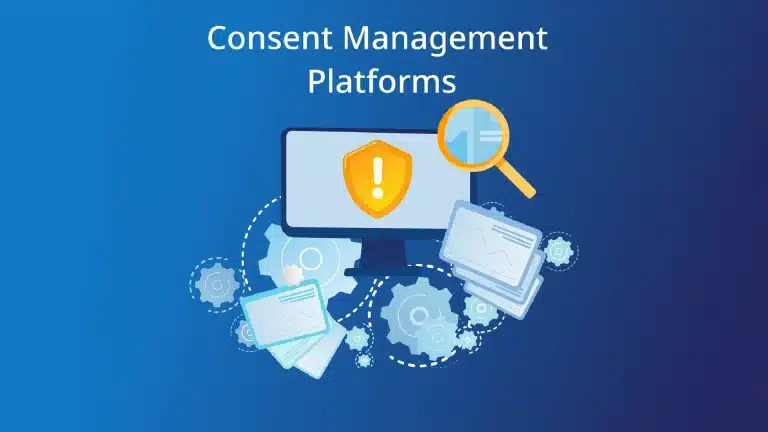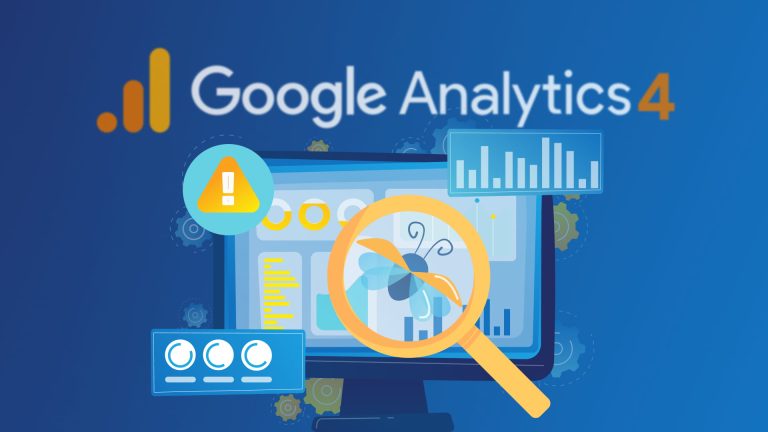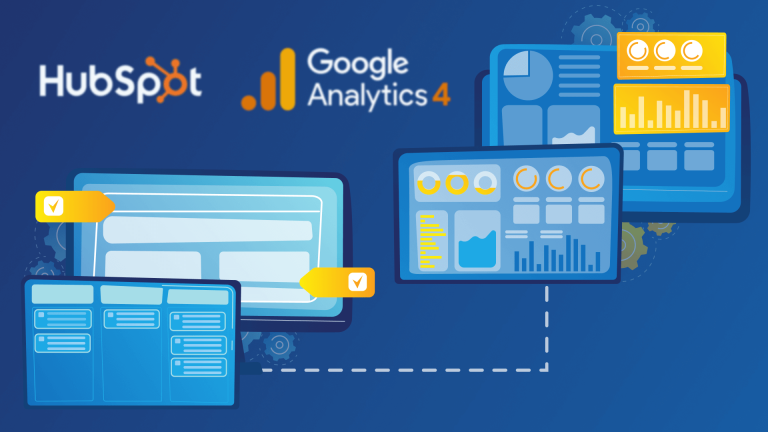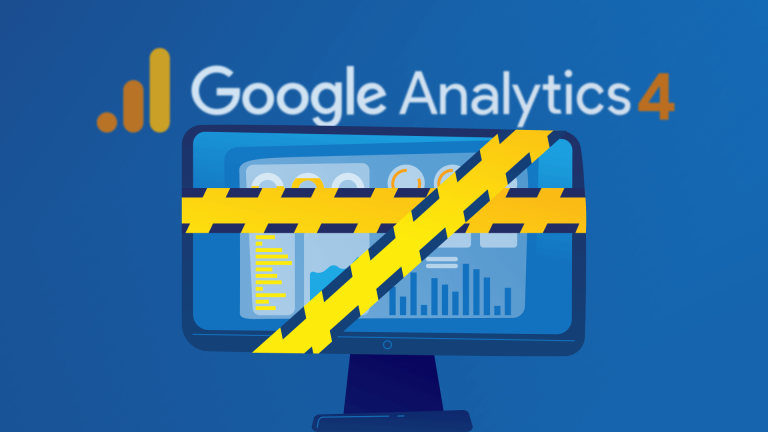Google Analytics is a powerful tool that helps you identify problems on your website and tells you which products and services work best for your visitors. Now, with the help of Google Analytics 4 (GA4), we’ll have a more robust set of tracking data and much better data analysis and more insights compared to previous versions.
In this article, you’ll learn what GA4 is and how it can benefit your business. If you use it right, it can be a powerful tool, but if you’re a beginner, you may be confused about it.
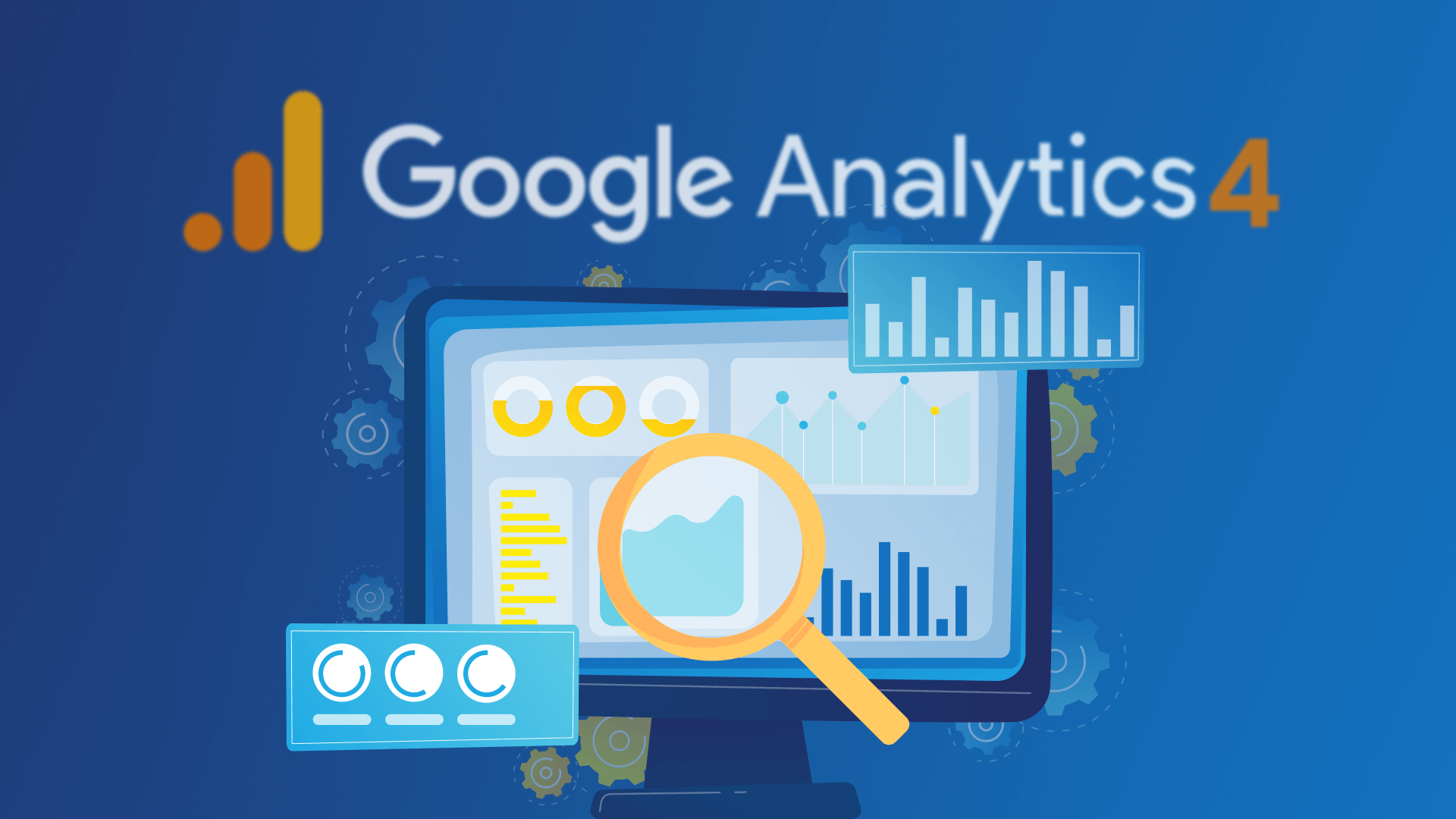
What’s Google Analytics 4?
GA4 is the next generation of Google Analytics and is an improvement over the previous version. Basically, GA4 is Google’s new intelligent analytics tool that prioritizes privacy. It allows us to gain more effective insights based on machine learning and artificial intelligence.
Is GA4 a replacement for the older version GA3?
We first heard about GA4 in 2020. Then, GA4 gradually started to come into our lives. Google introduced GA4 as an app and a web property in beta. As you learn more about it, you’ll see that GA4 is more than just a new version of Universal Analytics.
What’s new with GA4?
View:
The GA4 interface is a little different from what we’re already used to. Now it’s possible to filter the View in GA4. Plus, in standard Universal Analytics, we’ve sorted the products on three levels: Account, Property and View. However, in GA4 there are only Account and Property levels and no View structure, while there’s no View structure.
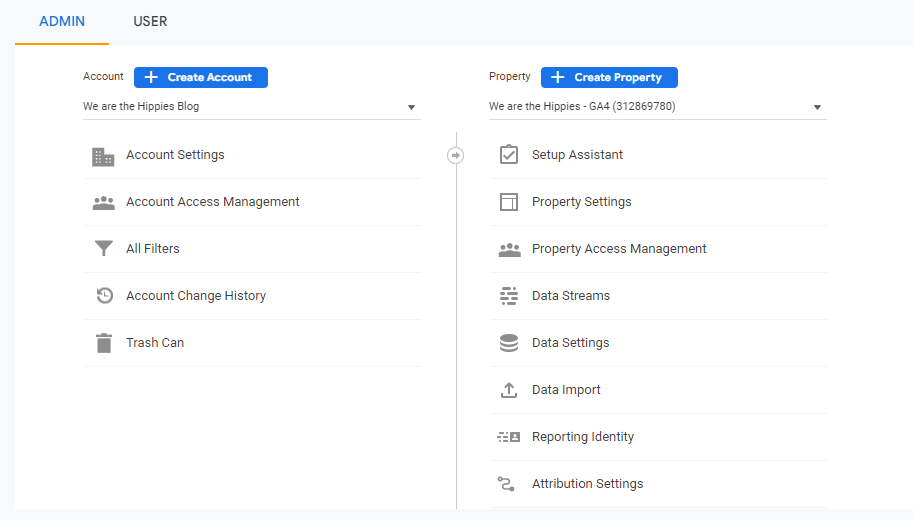
Session-based and event-based data model:
In the session-based data model, cookies are sent through the web browser of a user who visits your website to track page views, clicks, and actions during the session. GA4, however, has switched to the event-based data model. So it logs different types of data as “events.” As you can see, GA4 puts more emphasis on privacy.
| In Universal Analytics Property | In Google Analytics 4 Property |
|---|---|
| Social | Event |
| Page view | Event |
| User timing | Event |
| App/screen view | Event |
Acquisition, Engagement, Monetization Reports:
Acquisition reports allow us to track conversions from platforms, such as organic search, ads, and social media. While the acquisition reports look the same, we can still see some differences in the G4.
Acquisition reports are divided into an overview, user acquisition, and traffic acquisition. In addition, three new metrics (events, conversions, and page and screens) appear under Engagement. You can follow the purchasing behavior and earnings in the Monetization section.
Engaged Session: It’s a metric for the number of sessions that lasted longer than 10 seconds, had a conversion event, or viewed 2 or more screens or pages.
Average engagement time per session: It’s a metric for the time the user actually interacts with the page (scrolling, etc.)
Engagement rate: It’s a metric for the ratio of interactive sessions to total sessions.
Last but not least, you can track buying behavior and revenue in the Monetization section.
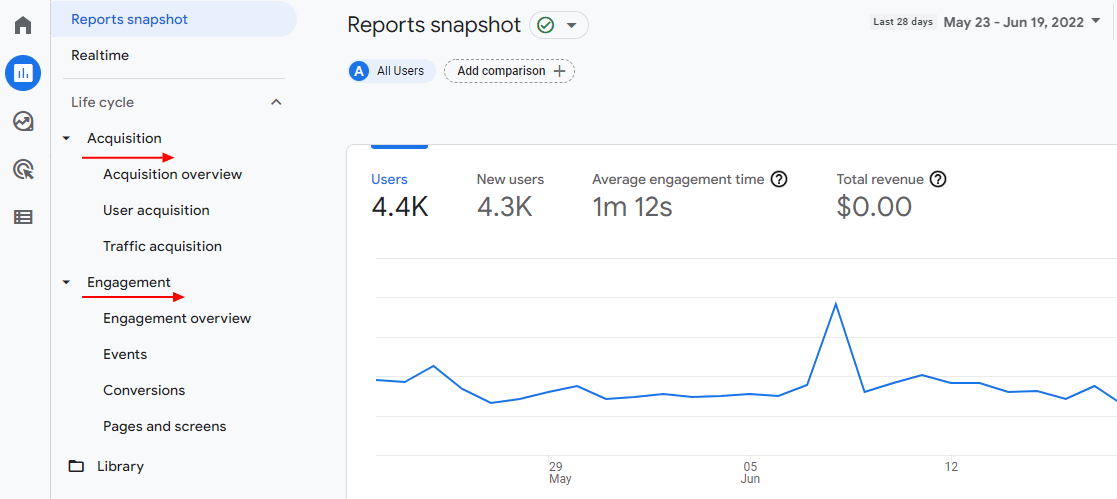
Segments:
We can now create three different segments.
User segments: A user segment is a subset of users who engage with a website or an app.
Session segments: A session segment can be all sessions from a specific traffic source, such as a specific social media platform or ad campaign.
Event Segments: This segment is useful if you want to analyze your Google Analytics data based on a subset of users or sessions based on specific events.
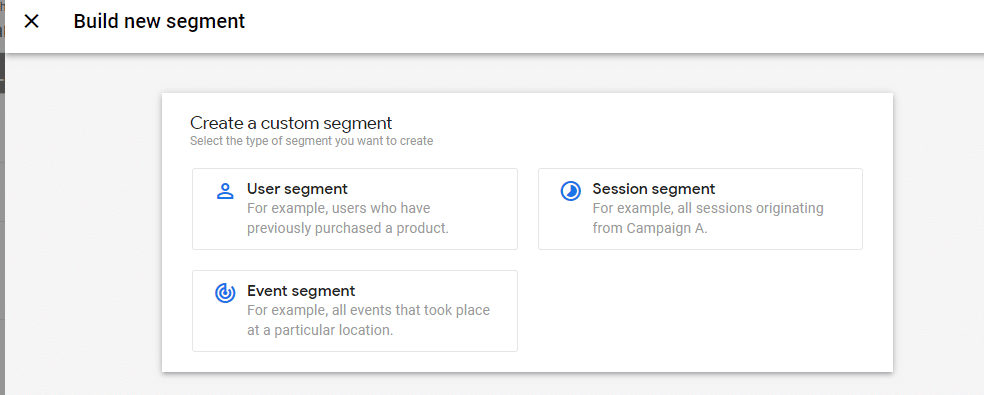
In addition, we shared 10 GA4 sources which give beneficial tips for beginners. If you struggle to understand it, read this article.
What’s the difference between Google Analytics 360 and GA4?
Google Analytics is a digital analytics tool that provides comprehensive data about user interactions on your website and mobile apps. Google also has a paid product called Analytics 360, which is designed for large companies around the world.
Both allow us to monitor and analyze data, but their limitations are different, of course. Google Analytics 360 offers more far-reaching capabilities like Google Analytics 4 properties in terms of collecting, reporting, storing, and exporting data to BigQuery.
For example, while it takes 2 days to prepare detailed data with Analytics, it takes an average of 4 hours with Google Analytics 360. Nevertheless, you can create 20 custom metrics in a standard Google Analytics account, while you can create 200 in 360 accounts.
Limits in Google Analytics
| Max number of properties (per Analytics account) | 100 |
| Length of property name | 24 characters |
| Marked conversion-events (user-defined) | 30 (for 360, it’s 50) |
| Max number of event parameters per event | 25 (for 360, it’s 100) |
| Number of custom insights | 50 |
| Number of event-scoped custom metrics | 50 (for 360, it’s 125) |
| Data retention | Up to 14 months (for 360, it’s up to 50 months) |
| Length of user property values (parameter values) | 36 characters |
Should I switch to Google Analytics 4?
The answer is yes. Google will discontinue Universal Analytics as of July 1, 2023, because it can’t deliver insights between websites and apps. This means that your tracking will automatically stop on that date, unless you switch to GA4. Bear in mind that Google will also delete all of your historical Universal Analytics data accordingly.
How can you use it for your business?
The more data you have, the faster you’ll succeed in your business. If you’ve detailed data, you can confidently take the next step. There’s no harm in using GA4 for your business, but you could miss important opportunities if you don’t use it. Plus, Google is paying more attention to privacy every day. When Google says goodbye to Universal Analytics and third-party cookies forever, you need to be prepared to collect data. Otherwise, how will you stand out from your competitors without data? That’s why you should upgrade your GA3 to GA4 as soon as possible.
Update: Google had intended to end third-party cookies by early 2025. But, recently, VP Anthony Chavez posted on the Privacy Sandbox Blog that they won’t remove cookies. Instead, they’ll focus on giving users more control over their browsing data.
Is Google Analytics 4 free?
Yes, Google Analytics 4 is available for free.
